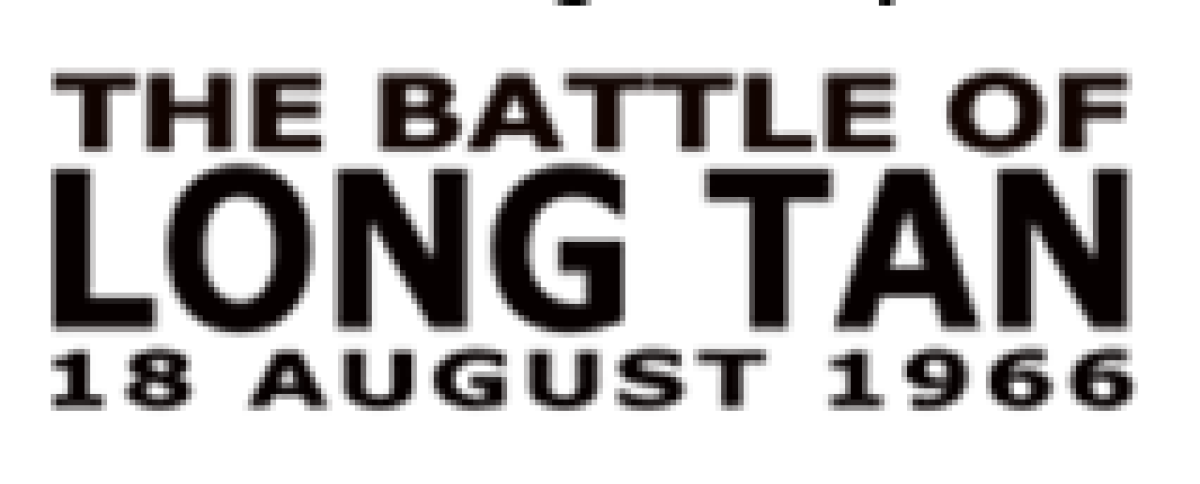We remember Long Tan

The Battle of Long Tan was one of the largest battles fought by Australians in the Vietnam War. On 18 August 1966, Delta (D) Company, Royal Australian Regiment (6RAR), fought an 'encounter' battle to defeat enemy forces in the Long Tan rubber plantation. The plantation was only a few kilometres from the 1st Australian Task Force base at Nui Dat. D Company suffered 42 casualties, including 18 dead – more than one-third of its strength – and some 245 enemy troops were killed. D Company's 105 men and 3 New Zealanders from 161 Battery, Royal New Zealand Artillery, fought for almost 4 hours against soldiers of the North Vietnamese Army, who outnumbered them by 10 to 1.
“I think, in retrospect, the Battle of Long Tan has been promoted to its icon status by the public and by the Viet vets themselves, rather than by the politicians or the senior military. It's sobering to realise that in fact only four medals were awarded for the Battle of Long Tan. The politicians and the senior military didn't recognise it as a great event, possibly because there might have been more of them at the time. But it's sobering to realise that it's the public and the Viet vets themselves that have made Long Tan the icon that it is today where 18th August is the nationally celebrated Vietnam Veterans Day.”
[Second Lieutenant Dave Sabben, Australians at War Interview No:2585]
Battle of Long Tan Story (abbreviated)
In May 1966 the first soldiers of the 6th Battalion, Royal Australian Regiment (6RAR) arrived in South Vietnam; the rest followed in June. Within two months elements of the battalion found themselves engaged in one of the largest battles fought by Australians in the Vietnam War.
By August 1966 the Australian task force base at Nui Dat was only three months old. Concerned at the establishment of such a strong presence in their midst, the Viet Cong determined to inflict an early defeat on the Australians. In the days before the battle, radio signals indicated the presence of strong Viet Cong forces within 5 kilometres of the base but patrols found nothing.
The catalyst for the battle was the Main Force VC (Viet Cong, an abbreviation for Vietnamese Communist) attack on the Australian operational base of Nui Dat, located in the centre of Phuoc Tuy. The attack occurred during the early hours of 17 August 1966, with the VC using mortars and recoilless rifles.
At Nui Dat, the Australian base buzzed as reports from Long Tan kept increasing the estimated number of VC opposing the Australians. Allied artillery was already firing on the VC, with targets identified by Forward Observers. US air support was requested with the Americans enthusiastically agreeing to help. However, when three F4 Phantom jets responded, they could not identify targets on the ground through the thick cloud, and dropped their ordnance beyond the range of the enemy. Two daring RAAF pilots from 9 Squadron had more luck when they flew through atrocious weather to drop boxes of ammunition from treetop height down to D Company whose supply was alarmingly low.
Praise for D Company came from many quarters. Prime Minister Harold Holt congratulated the ‘skill, effectiveness and high courage’ of the combatants, which he noted was in the best Australian tradition. American General William Westmoreland congratulated the Australians, declaring they had won one of the most spectacular victories in Vietnam to date.
For their part, the VC also claimed Long Tan as a victory, and disputed Australian accounts of the battle. VC leaders who participated in the battle were reluctant to acknowledge the severe losses that befell their force. A crucial reason for this was the importance of propaganda in sustaining an insurgency. Some of the more remarkable claims made by the VC in the aftermath of the battle were exaggerations that more than 500 Australian troops had been wiped out, and that a US Jet and three Australian APCs had been destroyed.
Australia’s actual casualties were 18 killed and 24 wounded. Although that number exceeded any other single day loss in the Vietnam War, the number could have been much higher given the disparity in troop numbers between the two sides. Long Tan is now remembered as an exemplar of Australian soldiers channelling the same attributes of bravery, teamwork and endurance that their forbears displayed in earlier conflicts.
